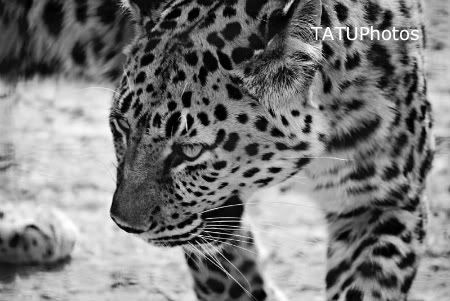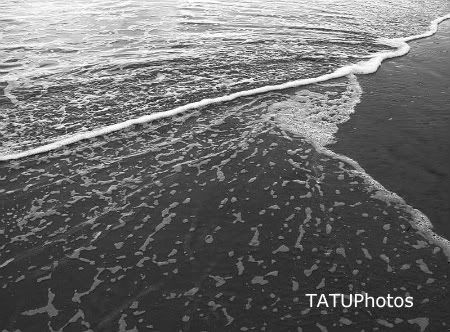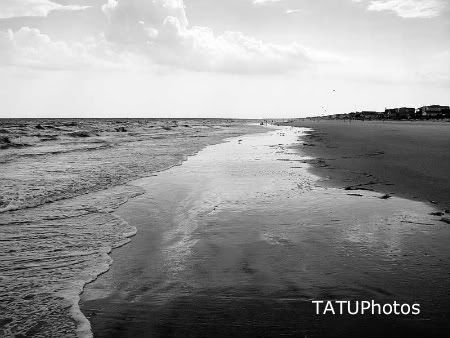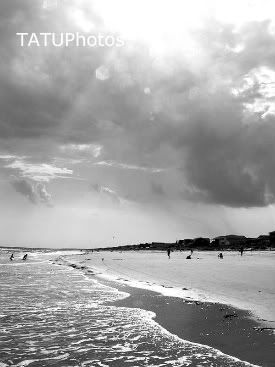I found an absolutely fabulous manual for my version of PSE at Borders yesterday (for 30% off!) and as I love reading manuals, the whole setup is perfect. I had NO idea you could do so much with just a basic version of Photoshop, and the first thing I did was learn how to use levels/layers/gradiant maps to convert color photos to B&W.
I had tried using some of the presets that came with the program, but they were a little frustrating - even though you can use RGB sliders, for some reason it was just...eh. However, with my newfound skills, I can make much more dynamic grayscale prints. Check out the Ampur leopard shot from my zoo trip, and how much more interesting it becomes after conversion:


LOVE IT.
(Sorry, I had to start making my humble little watermark bigger, I was getting unjustifiably paranoid)
I have a whole stash of photos from a trip to Holden Beach in NC back in 2009. For some reason I never thought to catch a sunrise or sunset there, but more importantly, it just wasn't as stimulating for me as the mountains I'd visited. So I never really liked the photos. But now..........black and white.




As I've mentioned in another B&W post, it's generally accepted that you should convert a color photo in post-editing, rather than using the B&W option in-camera. This seems like a huge stroke of luck. Honestly, in the past I've simply forgotten to try the B&W aspect - and it's totally okay. That makes me happy.

The most striking thing about the black and white is that it enhances perspective. I think it could even be used to focus the viewer, as an author's voice so to speak.
ReplyDelete